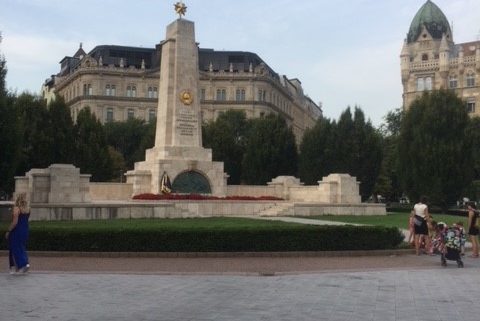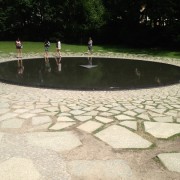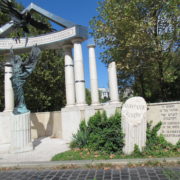The Communist Terror in Hungary
By Bryan Alicea
During the Second World War, Hungary was allied with Nazi Germany. In 1941, Hungary agreed to participate in Operation Barbarossa, a large-scale invasion of the Soviet Union conducted by Germany and its allies. By 1945, the tide of the war had turned against Germany, and the Soviet Union was advancing all over Central Eastern Europe. In April of that year, the Soviet Army expelled the Germans out of Hungary and liberated the Hungarian nation, as well as other Central or Eastern European nations that were once under Nazi Germany’s sphere of influence. After the liberation of Hungary, the Soviet army remained in the nation and occupied it until the end of the war. Hungary was not to retain its full independence for several decades, as the Soviet Union imposed a harsh Communist regime in Hungary shortly after the end of the war. The period of Communist rule in Hungary is largely characterized by economic depression, political oppression, and low quality of life.
In 1955, the Soviet Union and seven of its satellite states in Eastern and Central Europe ratified the Warsaw Pact, a treaty that established a defensive alliance between the Communist states. In 1956, Hungary rebelled against the Soviet Union to overthrow the Communist yoke ruling their country. The revolution, however, ultimately failed, as it was cruelly repressed by the Soviet army. Thousands of Hungarians and Soviets died during the engagement, and hundreds of thousands more fled as refugees or were displaced by the combat. The Prime Minister of Hungary at the time, Imre Nagy, was charged with treason and eventually executed in 1958. By violently crushing the Hungarian rebellion, the Soviet Union gave further proof that it was a despotic entity, and that the defensive military union established by the Warsaw Pact was not an alliance meant to counterbalance the West, but in fact the confirmation of Soviet dominance over Central Eastern Europe.
The oppression of the general Hungarian population cannot be solely attributed to Nazi and Communist influences, however, as native Hungarians also played a role. The Hungarian government was allied with Nazi Germany until 1944 and was complicit with many of its demands, including the deportation of Hungarian Jews. In March of 1944, the Hungarian government wanted to end its alliance with Germany and make peace with the Soviet Union, but the German government responded with an invasion and subsequent occupation of Hungary. As a result, Hungary’s Nazi-affiliated political party, the Arrow Cross, rose to power and proceeded to commit further crimes against Hungarian Jews and Roma. Hungary’s Communist party, the Hungarian Working People’s Party, later renamed the Hungarian Socialist Worker’s Party, was founded by native Hungarians and was compliant with the Soviet Union. It should also be noted that some native Hungarians sided with the Soviet Union during the 1956 revolution.
Located near the center of Budapest, the “House of Terror” is a museum dedicated to the remembrance of the atrocities and human rights violations committed against the Hungarian populace by the former Communist government and the Arrow Cross. The museum is somewhat controversial, however, as some Hungarians think that the museum does not accurately represent the role of native Hungarians in the oppression of their own people. The building itself used to be the headquarters of both the Communist and Arrow Cross secret police. When we were in Budapest, we had the opportunity to visit the museum. Every room in the museum deals with a unique chapter in Hungarian history and the museum is, in my opinion, rather well thought out. Upon entering the museum, the first exhibition presented is a T-55 battle tank. This battle tank was widely used by the Soviet army during the Hungarian Revolution of 1956. The T-55 essentially became a symbol of Soviet oppression in Hungary.
Towards the end of the museum, we came across a prison used by the Communist government to torture prisoners and extract information from them. This prison consisted of rooms that were meant to inflict excruciating physical displeasure on the prisoners. One of the rooms was so diminutive in width and length that the prisoners inside would not have space to sit down and would instead be forced to stand up for days. Another room was a large open space with a small gap at the end of the room that led to the exterior of the building. The prisoners in this room were forced to endure freezing weather conditions until they decided to give the authorities the information that they sought. Overall, I thought that visiting the “House of Terror” was a chilling account of Hungarian twentieth century history and an important reminder of the hardships endured by Hungarians during dictatorial rule.
There are a few monuments in Budapest that act as remembrance of the terror of Communist rule. In Liberty Square, a park in central Budapest, there is a massive monument erected by the Soviet government in 1946. The monument was meant to commemorate the ‘liberation’ of Hungary by the Soviet army. In actuality, the Soviet army did not liberate Hungary; it merely transferred power over Hungary from an oppressive Fascist regime to an oppressive Communist regime. A statue of Imre Nagy can be also be seen near the monument dedicated to the Soviet army’s ‘liberation’ of Hungary, and its purpose is to portray the resistance of Hungarians during political hardship and their will for autonomous independence.









